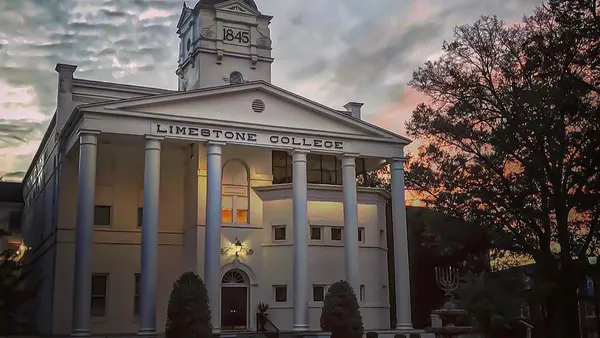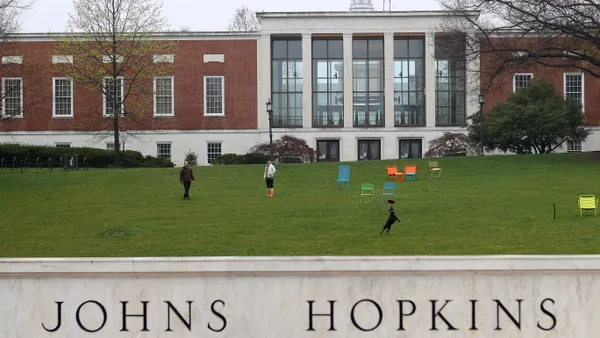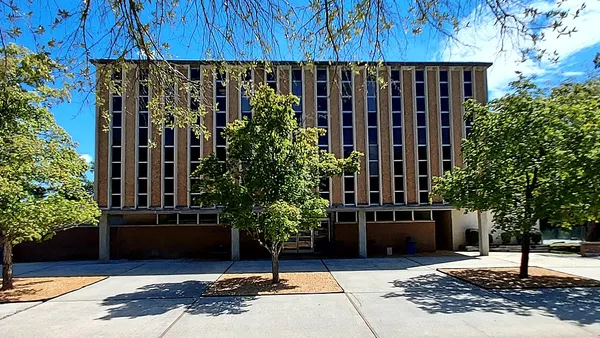After the coronavirus began working through the U.S. last spring, the U.S. Department of Education urged colleges to use their ability to adjust parts of students' federal financial aid forms to better reflect their economic hardships.
Aid applications rely on dated tax forms that don't always illustrate students' current financial circumstances, which would be a problem, for instance, if they or their parents lost their job or had their work hours reduced because of the pandemic.
The Biden administration reiterated this flexibility in a Dear Colleague Letter this January. In the letter, the Education Department acknowledged institutions might be wary of using this tactic, called professional judgment. That's because the agency typically considers how frequently it's used when selecting colleges for federal program reviews.
But in this unprecedented year, the department said increased use of professional judgment won't factor into program review selection for a few years. Given the big uptick in such requests, many higher education leaders are celebrating the department's decision. Colleges are also carving out other methods of ensuring students get aid.
"As our nation grapples with the financial impact of the COVID-19 pandemic, it is critical that the Department of Education provide financial aid administrators with maximum flexibility to help struggling families pay for college, and that institutions are not unfairly penalized for doing so," Erin Powers, a spokesperson for the National Association of Student Financial Aid Administrators, wrote in an email.
What is professional judgment?
Professional judgment enables college financial aid officers to modify the information reported on students' Free Application for Federal Student Aid, which in turn affects how much they are expected to pay out of pocket for college.
NASFAA surveyed nearly 300 schools in the fall and found more than half of them saw an increase in the number of professional judgment requests from March through September compared to the prior year. A vast majority (84%) of schools with full-time equivalent enrollment above 20,000 reported a somewhat or great increase.
At Rutgers University, in New Jersey, there were more than 1,000 professional judgment requests this academic year, roughly doubling from the previous year, according to a spokesperson. Most of the requests were related to a "significant loss of income" stemming from the pandemic.
In addition to the department encouraging colleges' use of professional judgment, the coronavirus relief proposal making its way through Congress dictates that institutions that accept federal assistance must use some of that money to reach out to financial aid applicants. In doing so, they must discuss options for adjusting students' aid awards.
Given many institutions' precarious financial positions, it's likely they will accept their allocation of the $40 billion in direct aid.
The department's reminders are "necessary messaging," said Clare McCann, deputy director for federal higher education policy at New America, a left-leaning think tank. "Because this all runs counter to what happens on a normal day, there needs to be some sort of notice given to the schools that something is different right now."
Applying for financial aid is already a confusing process for many students. And some, especially those who are Black or Latino, who are more likely to be first-generation, are less likely to know they can appeal how much aid they receive, according to advocacy group The Education Trust. It noted in a recent brief that the professional judgment process is not consistent across institutions.
"That could be cause for concern, as all judgments are subjective and potentially susceptible to implicit bias," the organization wrote.
What are colleges doing to help students?
Colleges recognize the present extenuating circumstances, and many are renewing efforts to get students as much aid as possible, even outside the professional judgment process.
California State University, East Bay, near San Francisco, caters to a majority low-income population, with 85% of the student body getting need-based aid, said Sonia Jethani, its director of financial aid and scholarships.
That means many students have an Expected Family Contribution of zero — the federal metric that determines how much they pay for school that has been renamed the Student Aid Index. That designation goes to the lowest-income students, and means they get a significant amount of aid, so tweaking their FAFSA would accomplish very little, Jethani said.
However, in those circumstances, the university would look for other resources — such as its emergency funds or a food pantry — to help those students weather the health crisis, she said.
The university also moved its in-person financial aid information sessions online because of the pandemic, which enabled them to reach more people. It worked with other entities, such as local high schools and community colleges, to get the word out about the sessions, especially to disadvantaged communities, Jethani said.
In a normal year, only six or seven students might show up to a session, she said. In the latest round of digital workshops, more than 600 people registered in all.
The institution hasn't seen an overwhelming increase in professional judgment requests, Jethani said. But it has tried to make it easier for students to understand and file financial aid materials. The university created an online portal where students can submit tax documents to the school electronically, rather than mail them, among other measures.
"We want them to get as much aid as possible," she said. "It takes a village."
Johns Hopkins University, a top-ranked private institution in Baltimore, also hasn't experienced a measurable increase in students petitioning to have their FAFSA information adjusted, said Tom McDermott, assistant vice provost for financial aid.
But the university has seen many more students appealing for more institutional aid, which Johns Hopkins calculates through a separate formula from the federal government's, McDermott said. The institution has fielded 2,500 or so such requests from undergraduates this academic year, versus about 1,100 by the end of the last school year. The university enrolled more than 6,200 undergraduates in fall 2019.
The institution's financial aid forms are typically due Jan. 15, so when the pandemic picked up after last year's deadline, officials followed up with aid applicants to gauge whether they needed their awards boosted, McDermott said. About 200 students contacted McDermott's office as a result of that outreach, which resulted in about $4 million in additional financial aid spending, he said.
McDermott said students often "self-select" what help they ask their colleges for, and so many assume they can't get more money. He recommended that instead of pushing complicated financial aid information at students, colleges should hear them out about their circumstances and then link them to the right resources in or outside the institution. To that end, Johns Hopkins created an application that allows prospective students to detail their financial situation and get support, McDermott said.
"Our message basically is, tell us your story," he said. "We want to have the opportunity to see if there's something we can do, particularly to make sure they stay in school."
This story has been updated with data from Rutgers University.












